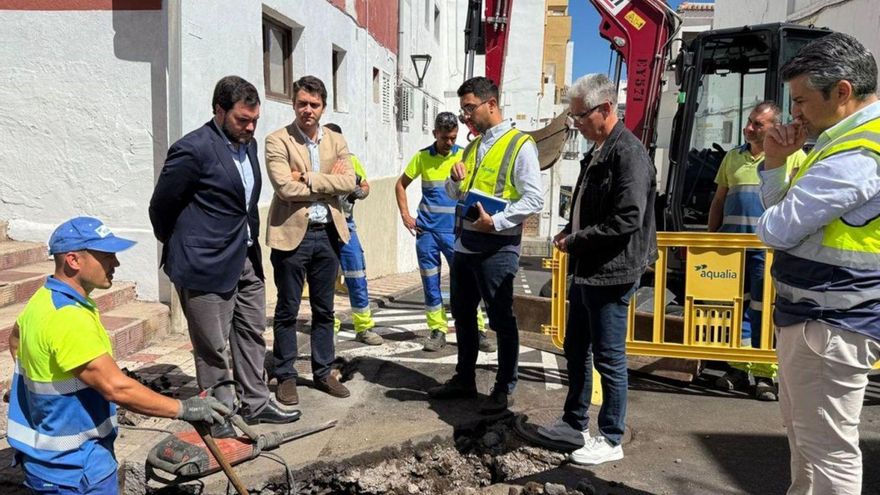Tenerife and Gran Canaria Secure Funding for Future Railway Projects

The document commissioned by the Cabildo indicates that 17 alternatives were analysed, including transport infrastructure options to be considered by the corporation led by Rosa Dávila. It concluded that the most suitable proposal involves up to three BUS-VAO lanes, parking facilities, and an extension of the tram network.
### Historic Agreements for Railway Construction
This week, agreements were signed confirming the Spanish Government’s commitment to participate in the future railway constructions in Tenerife and Gran Canaria. This represents a “historic day” for mobility on both islands and an “ardently desired dream” led by the Cabildo of Tenerife, paralleling that of Gran Canaria. However, a study commissioned by the Tenerife government evaluated prioritising bus lanes as the best mobility plan alternative, relegating rail transport to a secondary position.
Both agreements were signed in the presence of the President of the Canary Islands, Fernando Clavijo; the Minister of Territorial Policy, Ángel Víctor Torres; the Secretary of State for Transport, José Antonio Santano; the regional Minister for Public Works, Pablo Rodríguez; and the island presidents, Antonio Morales for Gran Canaria and Rosa Dávila for Tenerife.
This marks the penultimate step necessary to provide both islands with railway infrastructure, connecting their capitals to key tourist and economic development centres in the southern parts of the islands.
### Next Steps for Implementation
The final step will be the signing of a multi-year agreement for the works, setting out the funding amounts that the Spanish Government will contribute towards the construction of both railway lines. These investments will also seek the involvement of the European Union, arguing that such infrastructure will be crucial for decarbonising land transport in the Canary Islands, as highlighted by the President and the Minister during the signing last Wednesday.
Fernando Clavijo has repeatedly emphasised that improving mobility and reducing traffic congestion in Gran Canaria and Tenerife requires prioritising public transport and railway projects. He stated this in the Canary Islands Parliament last May in response to ASG MP Casimiro Curbelo regarding investment cooperation projects aimed at addressing congestion on the main roads of both islands.
Concerning Gran Canaria, the agreement signed on Wednesday, 3rd September, aims to connect the capital with Maspalomas in the south, recognising this line as a project of public interest for the State, estimated to cost around 2 billion euros.
In Tenerife, the signing took place on Thursday, 4th September, a day later than in Gran Canaria. Once funding is secured, the aim is to commence the first phase of the southern project, linking San Isidro with Costa Adeje, at an estimated cost of approximately 950 million euros (the entire line is projected to cost about 2.5 billion euros).
### Updating the Project Plan
However, the project will need to be updated and undergo another Environmental Impact Declaration (DIA) as the previous one has expired. Clavijo stated that we are now “closer than ever” to having trains in Tenerife after “many years” of debate, highlighting the Cabildo’s “leadership” in these projects and recalling the “success” of the tram as a model for sustainable mobility.
Coalición Canaria has asserted for years that this is the “only solution” and that “there is no alternative” for improving mobility on the island. Nevertheless, it is essential to note that a study conducted by Tema Ingeniería, commissioned by the Cabildo of Tenerife earlier this year, provided contradictory data regarding the claims made by the island’s corporation.
The document included an evaluation of 17 alternatives for transport infrastructure to be considered by administrations over the coming decades “from a sustainability perspective.” However, the results suggested that the optimal alternative prioritised the establishment of three BUS-VAO lanes, park-and-ride facilities, tram extensions, and relegated the construction of trains to a secondary role.
The evaluation of alternatives was conducted using a multi-criteria analysis, comparing and selecting the most suitable options considering economic, social, functional, and environmental perspectives. Proposals were examined based on construction and operating costs, demand forecasts from simulations, time savings, and environmental impacts, such as land occupation and emissions.
Among the 17 options presented, the highest-rated by the PIMSIT signatories encompasses road projects currently under development, BUS-VAO lanes, tram network expansions, and park-and-ride facilities along the TF-1, TF-5 corridors, and other areas.
The authors of the study acknowledge that Tenerife “has clearly fallen behind in implementing policies favouring a modal shift towards public and non-motorised transport.” The current situation shows “really low” percentages of public transport usage “despite the extensive coverage available on the island.”
Among the key causes are population dispersion, accessibility of the road system, and the convenience of private vehicles on interurban networks. Tenerife, like the Canary Islands generally, was designed for cars to reach almost any point on the territory, complicating the establishment of sustainable mobility now being targeted by the study.














